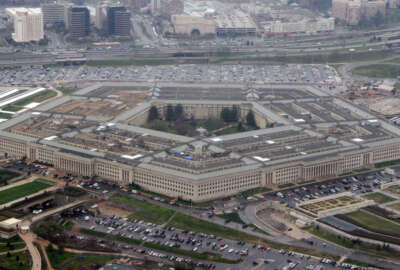
GAO: DoD boosted its ‘buying power’ by $10.7 billion in 2016
In its annual assessment of DoD’s major weapons systems, GAO calculated that over the past year, the department has seen a $10.7 billion increase in its “buying...
The media and Congress are quick to point out instances in which Pentagon procurement has gone drastically awry, and rightly so, since it’s public money at stake. But it’s also worth pointing out glimmers of progress when we see them.
In its annual assessment of the Defense Department’s major weapons systems, the Government Accountability Office calculated last week that over the past year, DoD has seen a $10.7 billion increase in its “buying power” — GAO’s term for the amount of goods or services the department is able to buy with a given amount of money, even after adjusting for increases or decreases in the number of items within a certain procurement line.
In fact, there are several data points in GAO’s analysis of DoD’s 2016 weapons portfolio that seem to undercut the narrative that weapons costs are out of control, a picture painted as recently as last week by Sen. John McCain (R-Ariz.), the chairman of the Senate Armed Services Committee, who claimed that the Pentagon has “done nothing but resist” Congress’ efforts to control cost growth.
As we reported in some detail last month, DoD’s own analyses show that cost growth is now at its lowest level since 1985 (3.5 percent as of 2015), and it’s been steadily declining since right around the time the department introduced a series of internal reform initiatives known as Better Buying Power.
GAO’s figures tell a similar story: Taken together, the 78 DoD weapons programs that are currently in some stage of the ponderous acquisition system have grown from their initial cost estimates by a total of $484 billion, but only $8.6 billion of that growth has happened since 2011.
There are some other data points that suggest things are improving. Taken together, the department’s newest acquisition programs — the 19 it’s started since 2010 — have not just grown at a slower rate than the historical norm, they’ve actually decreased in cost by a collective $3.4 billion compared to the estimates GAO reported a year ago. And the practice of “should-cost” management has saved $23.6 billion since it was first implemented as part of Better Buying Power.
But lest we get ahead of ourselves in praising the Pentagon’s progress, there are several gloomy aspects to the annual assessment. For one, although cost overruns are generally on the downswing, schedule overruns aren’t. GAO found DoD’s weapons portfolio tacked on delays averaging two additional months compared to a year ago.
To take one high-profile example, the Air Force has managed to bring down the total cost for the 179 KC-135 refueling tankers it plans to buy to $44 billion — 14 percent less than the program was expected to cost when it first started in 2011. But the tanker program is at least a year behind schedule, and GAO worries it could slip even further.
Competition is another major issue. Although DoD’s own acquisition leadership has preached more competitive procurements as the single best way to bring costs down, neither the department’s data nor GAO’s analyses have shown much progress.
Out of the 45 programs GAO studied in detail for the 2016 review, fewer than half had done any competitive prototyping. Out of the nine of those that were still in their beginning phases, only one program had formal plans to introduce competition before they started formal development.
Return to the DoD Reporter’s Notebook
Copyright © 2024 Federal News Network. All rights reserved. This website is not intended for users located within the European Economic Area.
Jared Serbu is deputy editor of Federal News Network and reports on the Defense Department’s contracting, legislative, workforce and IT issues.
Follow @jserbuWFED





